Jharkhand, Hazaribagh "An endangered heritage" — part 1
Upon leaving the city, the beautiful hills and lush green nature immediately dominate the landscape. Cows graze in the shade of tall evergreen sal trees (Shorea robusta), while the paddy fields, which are dry in November, are ripening.
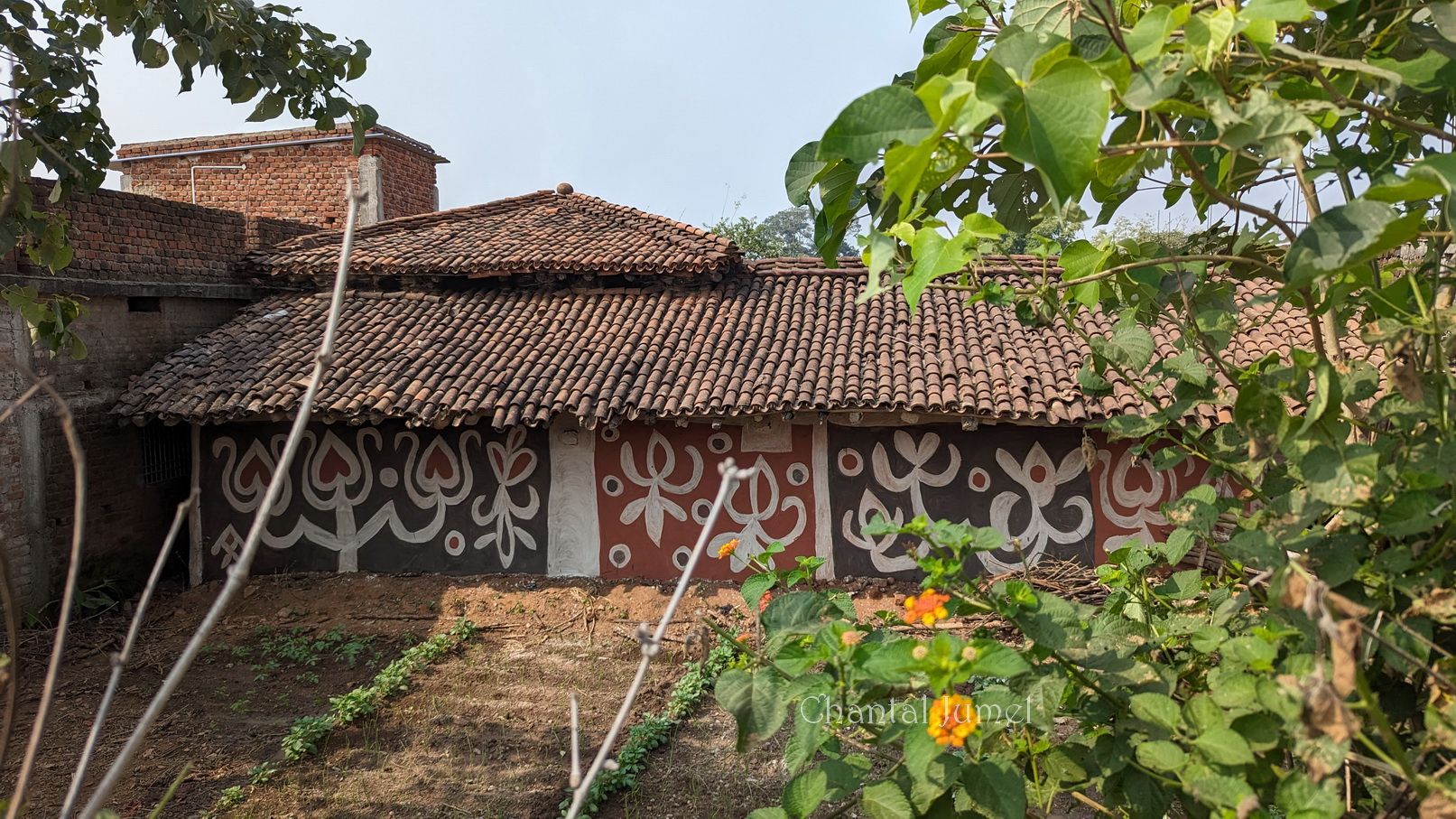
The 2023 journey to India begins in Jharkhand, a northern state of the country which was carved out from Bihar in 2000. It is bordered by West Bengal to the east, Odisha to the south, and Chhattisgarh to the west. I arrived at Birsa Munda Ranchi airport in the early evening for my meeting with Bulu Imam and his family at the Sanskriti centre in Hazaribagh, the capital of Jahrkhand.
My project is to document Diwali, the festival of lights, as well as the tribal wall paintings and floor paintings called aripan created during Sohrai. The tribal populations of Bihar, Jharkhand, Chhattisgarh, Odisha, and Bengal celebrate the latter as a harvest and cattle festival. It is the eve of Diwali and, as in Europe in the days leading up to the festive season, the frenzy of last-minute shopping intensifies. It took me three hours to reach the house of my host, Bulu Imam, in Hazaribagh. After the introductions, I expressed my disappointment at not having had the chance to admire the scenery and was informed that the road was lined with open-cast coal mines and that I had escaped a desolate scene. Later, I discovered that the state of Jharkhand has the majority of India's coal reserves, and that their anarchic exploitation has been destroying the environment for decades. In the days to come, I will have the opportunity to assess the impact.
The following morning, I was pleasantly surprised to be awakened by the call of the chakora or pheasant crow (Centropus sinensis). This strange and secretive bird, with dark red eyes, hops about. Seeing or hearing its low cry is considered a good omen. Created by Bulu Imam, the Sanskriti Centre is a peaceful haven nestled in a grove. The trees are intertwined with lianas and are home to numerous birds, squirrels, and, above all, golden orb-weavers or golden nephilid spiders whose webs are among the largest in the world.
As I joined my hosts for breakfast, my attention was drawn to a neighbouring house adorned with faded wall paintings. Two women were busy preparing a mixture of earth and cow dung to cover up last year's paintings.
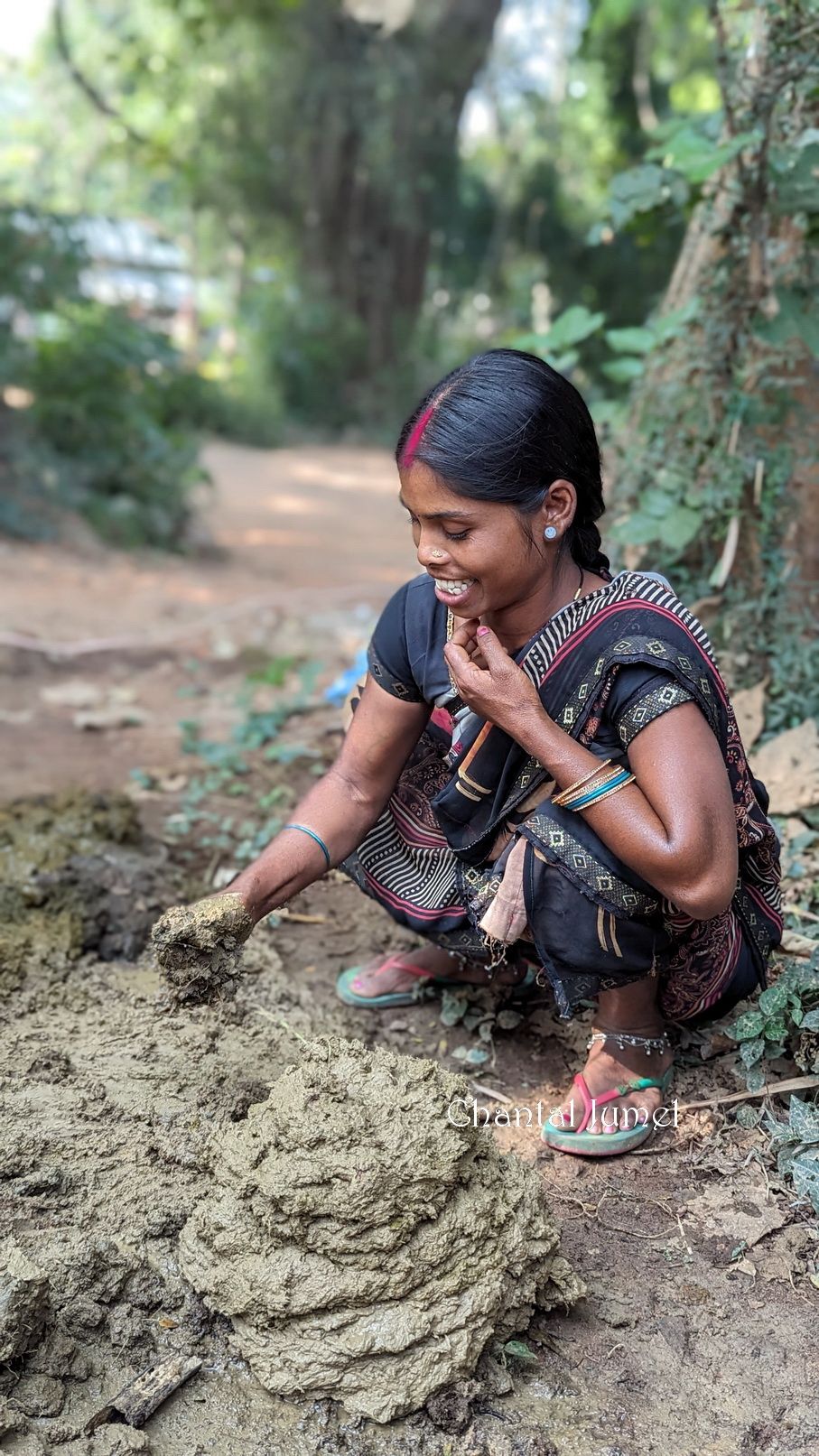
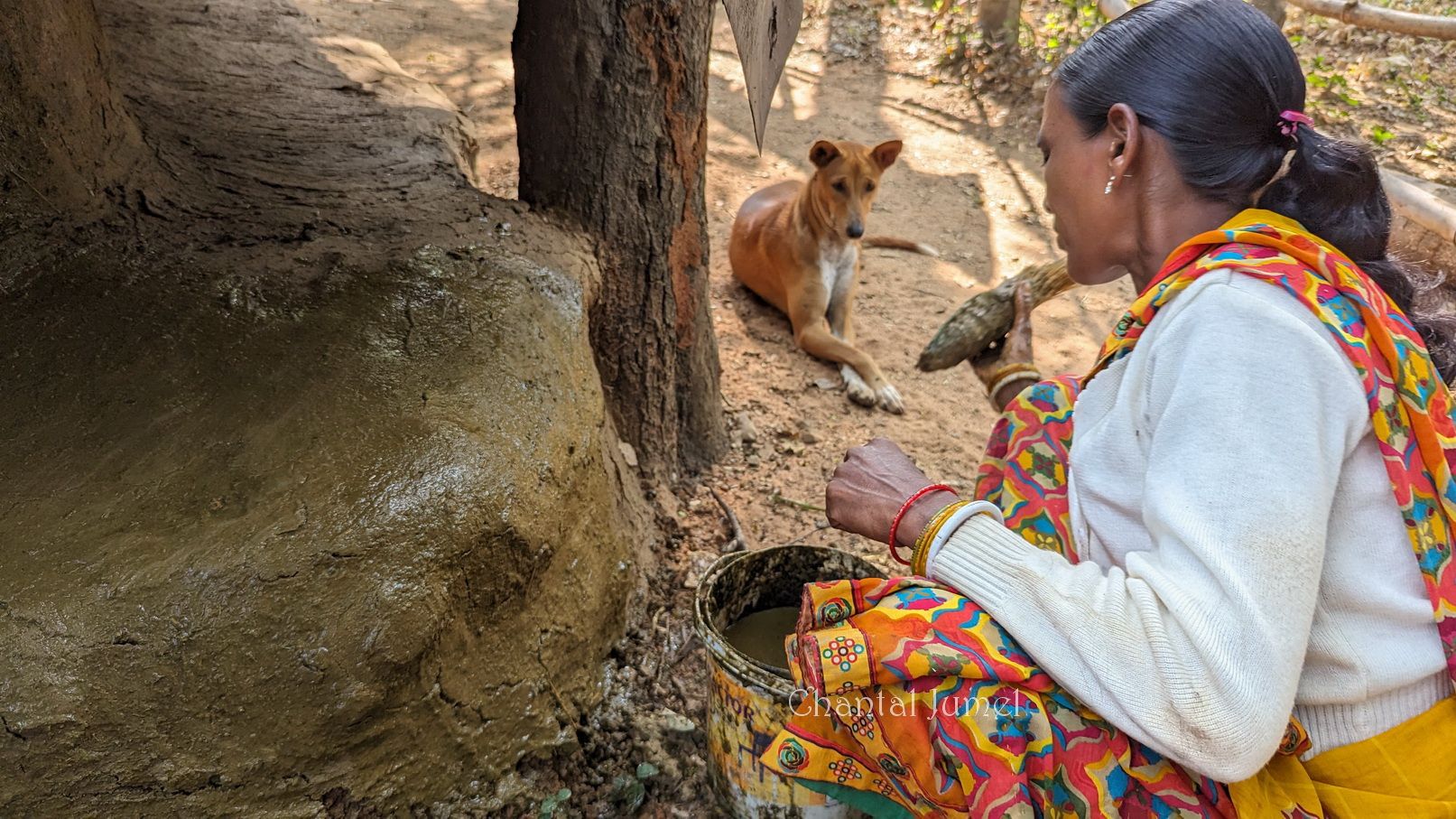
After breakfast, I set off with Justin Imam, my host's son, who will be my guide during the stay. Justin has been accompanying researchers, photographers, and tourists to the surrounding villages for years. We travelled for two hours to reach Oria and Bhelwara, two villages where wall paintings can still be seen.
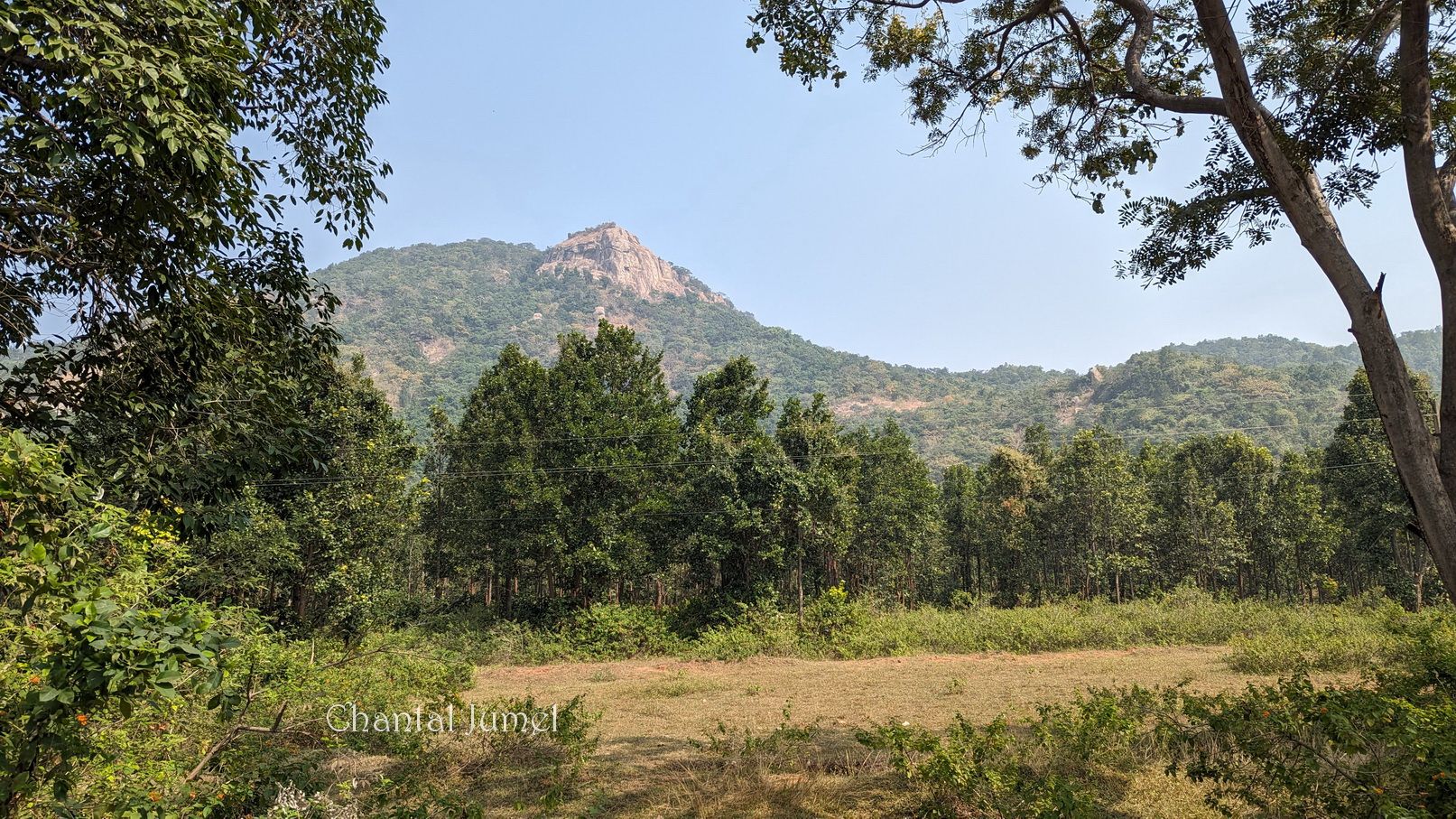
Upon leaving the city, the beautiful hills and lush green nature immediately dominate the landscape. Cows graze in the shade of tall evergreen sal trees (Shorea robusta), while the paddy fields, which are dry in November, are ripening.

As we approached the villages, I noticed many well-tended gardens filled with a variety of vegetables.
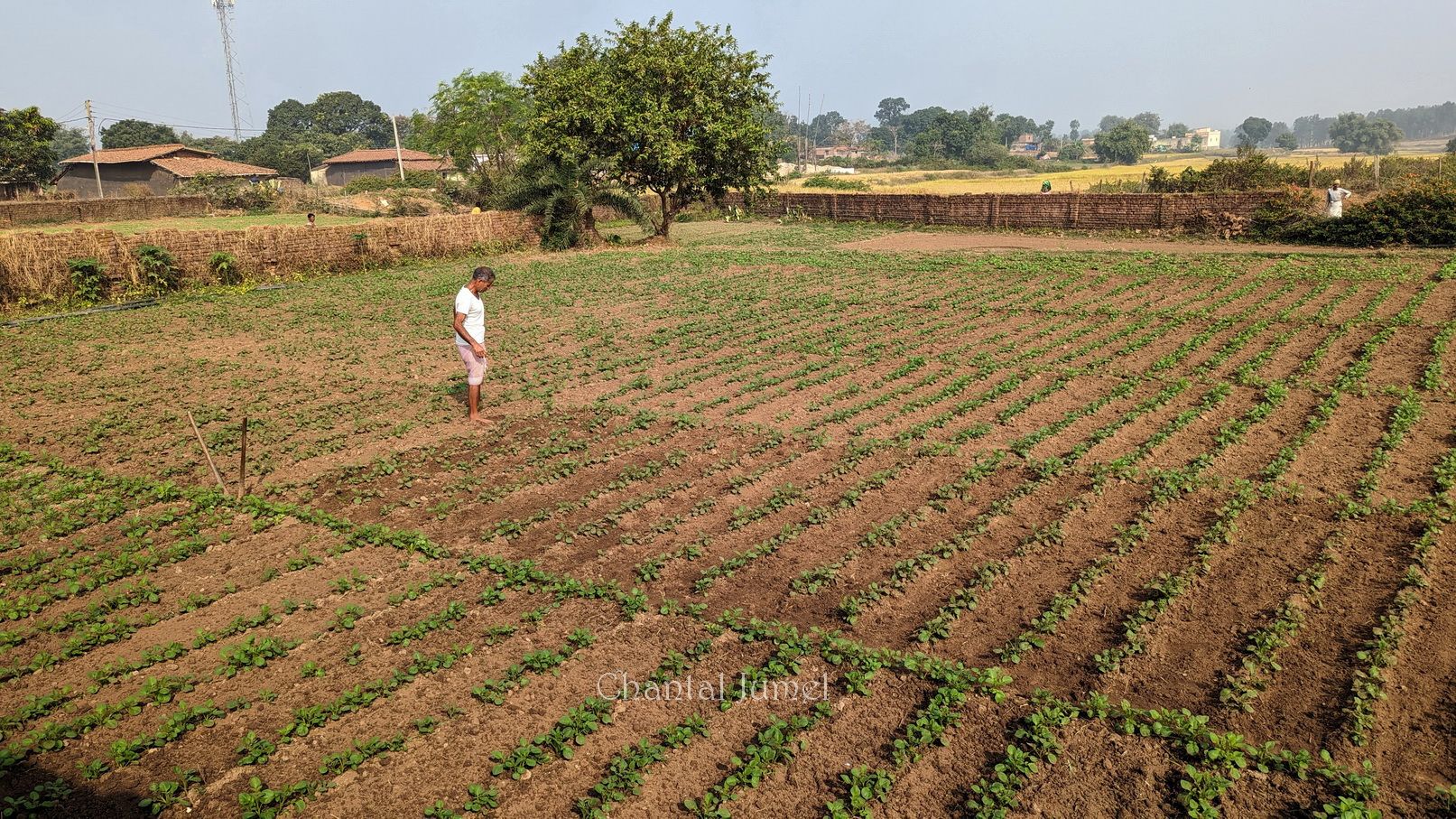
The women renew the murals a few days before the Sohrai festival. Justin, my guide, greeted the villagers with a “johar” - a popular tribal greeting in Jharkhand. He then distributed bags of kaolin powder and iron oxide to some of the houses. These in-kind donations are from a French association established in 2014 by photographer Deidi Von Schaewen, who first visited the painted villages in 2009 with Bulu Imam. On her next visit in 2012, she noticed a significant decline in the number of paintings. She therefore created the association "Femmes du Hazaribagh" to provide the necessary pigments needed for the murals.

With the support of the Imam family and the French association, the women were then encouraged to paint their designs on paper, and the sale of their creations enabled them to continue the tradition of mural painting. However, Bulu Imam was the man who initiated the conservation project. He is an enthusiast who has written extensively on tribal murals, the graphics of the Isco archaeological site, and the tribal songs collected within his family circle.
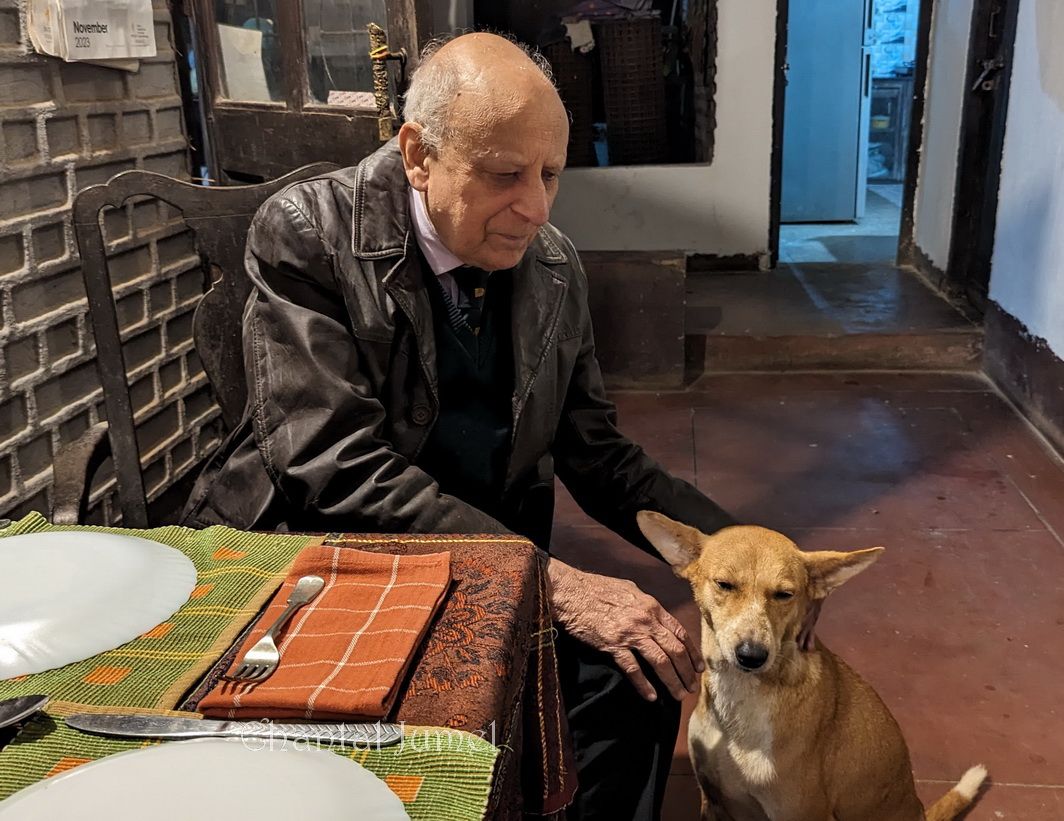
In his youth, he was a big-game hunter and later, became an ecologist. In 1979, he witnessed the massive destruction of forests caused by state coal-mining projects. He led a protest movement against it because coal mining was disrupting the lives of tribal communities whose livelihoods depended heavily on the forest. Despite receiving the Gandhi Foundation's International Peace Prize and the Padma Shri Medal for his work in safeguarding a priceless heritage, coal mining in India continues to increase every year and continues to eat away at the forest and the lives of tribal communities.

Story to be followed...
